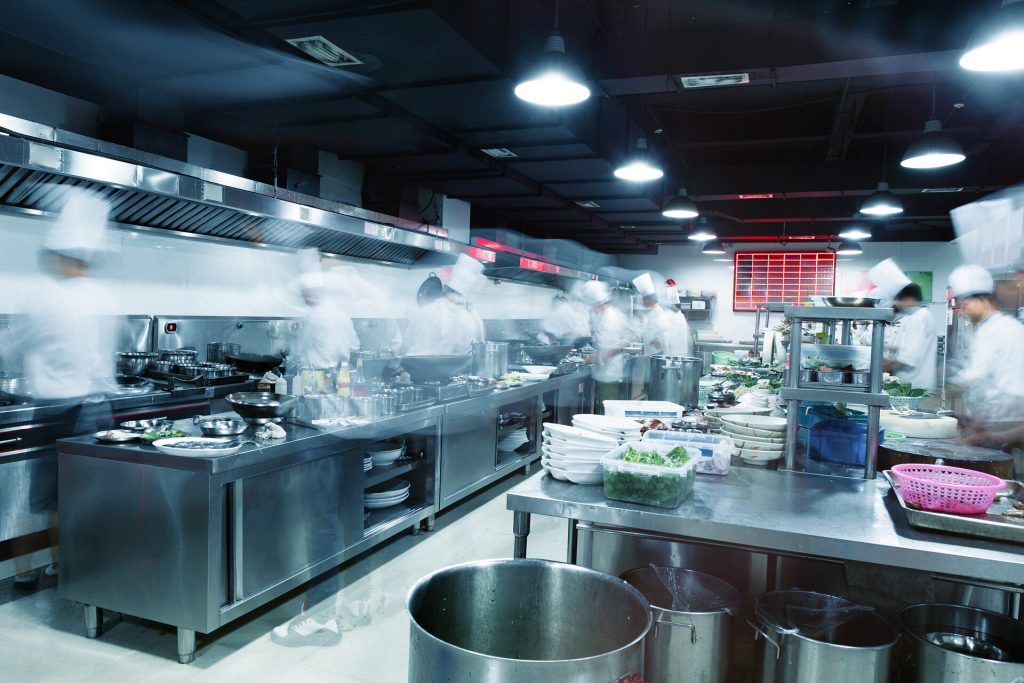In the fast-paced world of commercial kitchens and food service establishments exhaust hood installation is essential for maintaining air quality, ensuring safety, and complying with health regulations. At the heart of any effective ventilation system in a commercial kitchen is an exhaust hood to remove smoke, grease, odours, and other airborne contaminants generated during cooking processes. In this blog, we’ll cover everything you need to know about commercial exhaust hood installations, their importance and key things to consider.
Importance of Commercial Exhaust Hood Installations
- Air Quality and Safety: Proper ventilation removes airborne contaminants, such as grease, smoke, and cooking fumes, improving indoor air quality and creating a safer and more comfortable working environment for kitchen staff.
- Fire Prevention: Exhaust hoods equipped with fire suppression systems help mitigate the risk of grease fires by capturing flammable particles and extinguishing flames before they can spread.
- Health Compliance: Health codes and regulations mandate the installation of commercial exhaust hoods in food service establishments to ensure compliance with sanitation and safety standards.
- Equipment Protection: Exhaust hoods help protect kitchen equipment and surfaces from grease buildup, which can cause damage and pose fire hazards if left unchecked.
Different Types of Commercial Exhaust Hoods
Commercial exhaust hoods come in various types, each designed to suit specific kitchen layouts and cooking equipment Canopy hoods are the most common type of commercial exhaust hoods, typically installed over cooking appliances such as stoves, ovens, and grills. Another option is wall-mounted hoods that are installed on the wall behind cooking equipment, making them suitable for kitchens with limited ceiling space. On the other hand, island hoods are beneficial for spacious kitchens and are suspended from the ceiling above the cooking area.
Key Considerations for Commercial Exhaust Hood Installations
Several factors must be taken into account when planning for commercial exhaust hood installations. The layout of the kitchen and the placement of cooking equipment will influence the type and size of exhaust hood required. Proper positioning is essential for effective capture and removal of contaminants. The design and installation of ductwork are critical aspects of commercial exhaust hood installations. Ductwork should be sized appropriately, free of obstructions, and routed to the exterior of the building to safely exhaust contaminated air outdoors.
How To Enhance The Performance of Your Commercial Exhaust Hoods
To maximise the effectiveness of commercial exhaust hood installations and ensure long-term performance, adherence to best practices is essential
- Regular Maintenance: Commercial exhaust hoods should be cleaned and maintained regularly to prevent the buildup of grease and debris, which can impede airflow and reduce efficiency. Filters, ductwork, and fans should be inspected and cleaned according to manufacturer recommendations.
- Proper Sizing: Exhaust hoods should be sized appropriately to match the cooking equipment and capture area. Oversized or undersized hoods can lead to inefficiencies and increased energy consumption.
- Professional Installation: Commercial exhaust hood installations should be performed by qualified technicians with expertise in commercial kitchen ventilation systems. Professional installation ensures compliance with regulations, proper equipment operation, and safety.
Commercial Exhaust Hood Installation
With proper planning, professional installation, and regular maintenance, commercial exhaust hoods play a crucial role in enhancing the functionality and safety of commercial kitchens for years to come. If you’re looking for commercial exhaust hood installation in Tweed Heads, Gold Coast or Brisbane, contact Exhaust Fan Motor Solutions.

